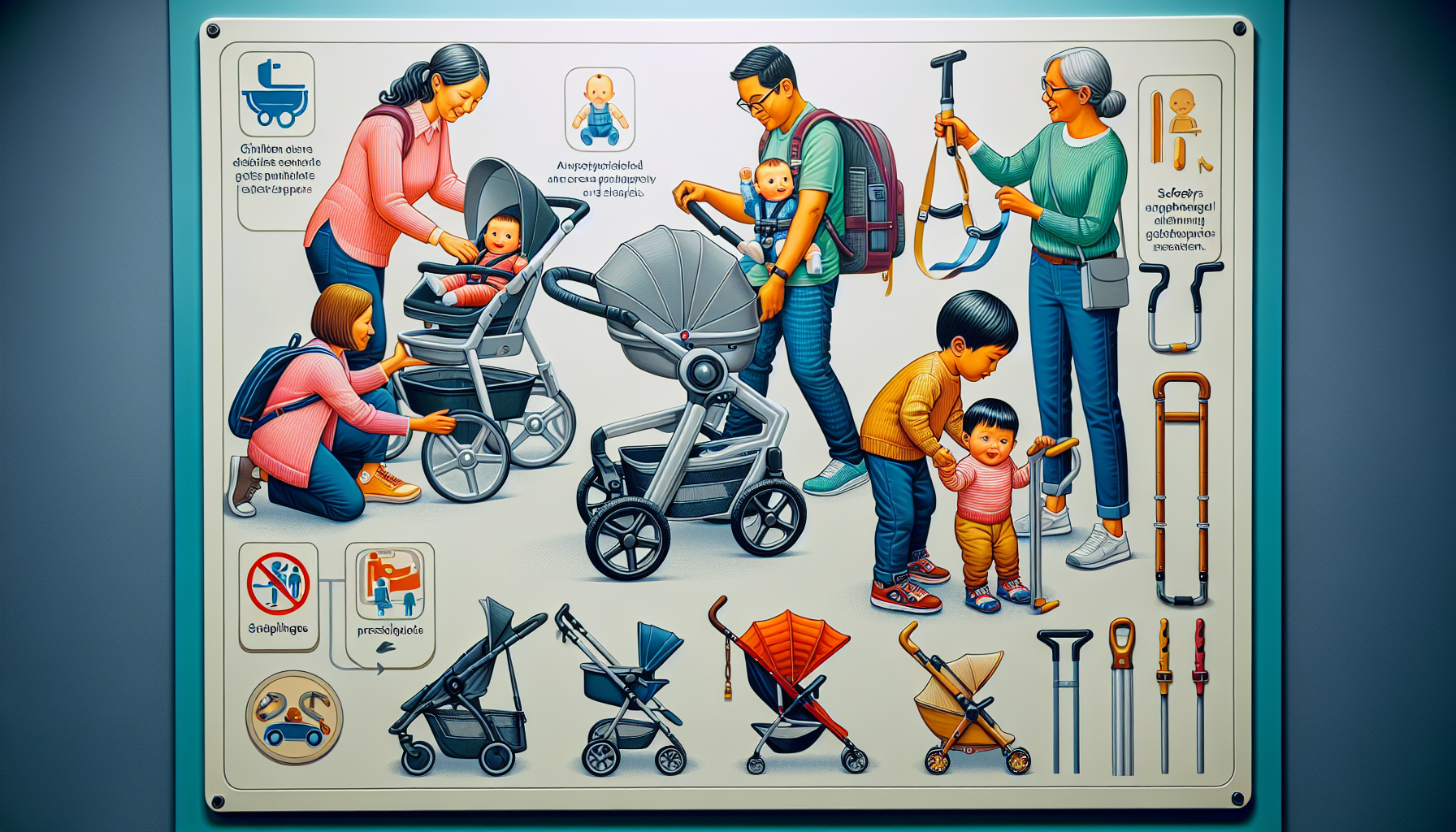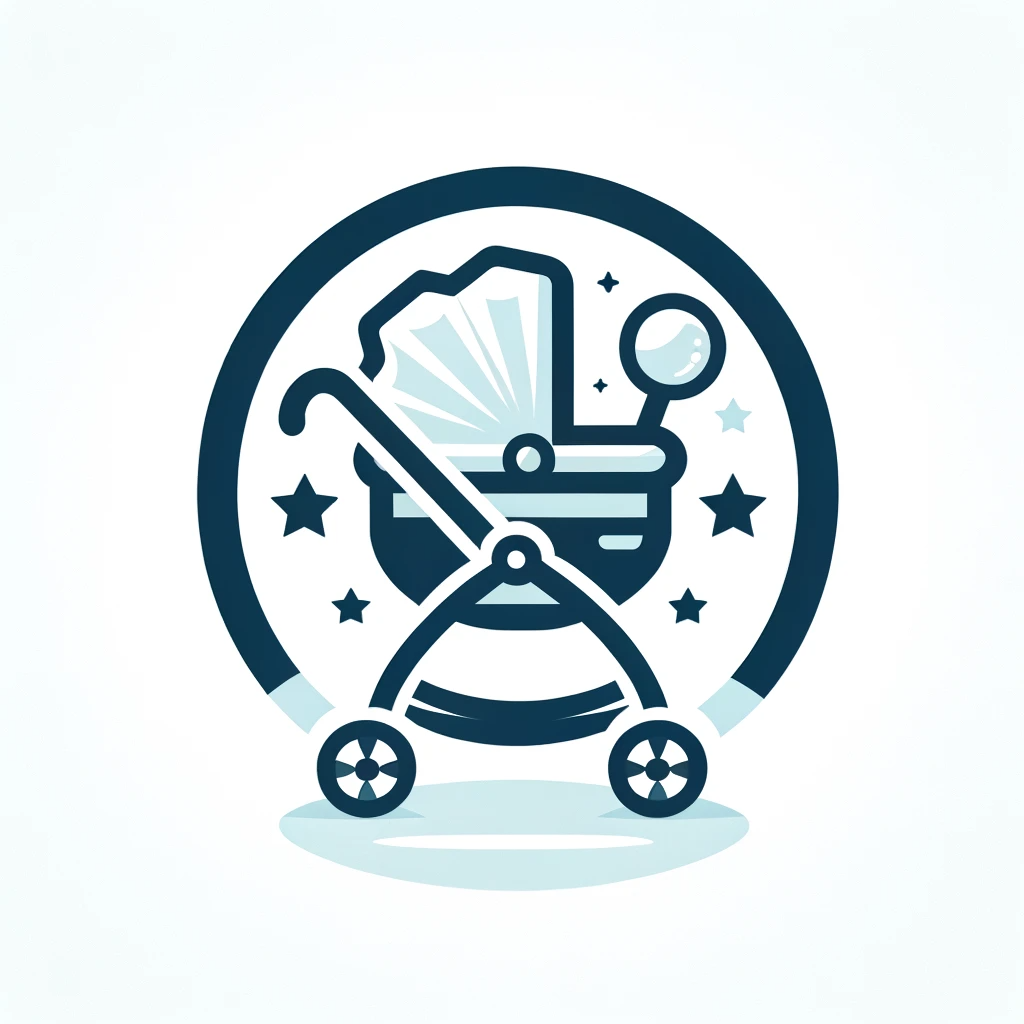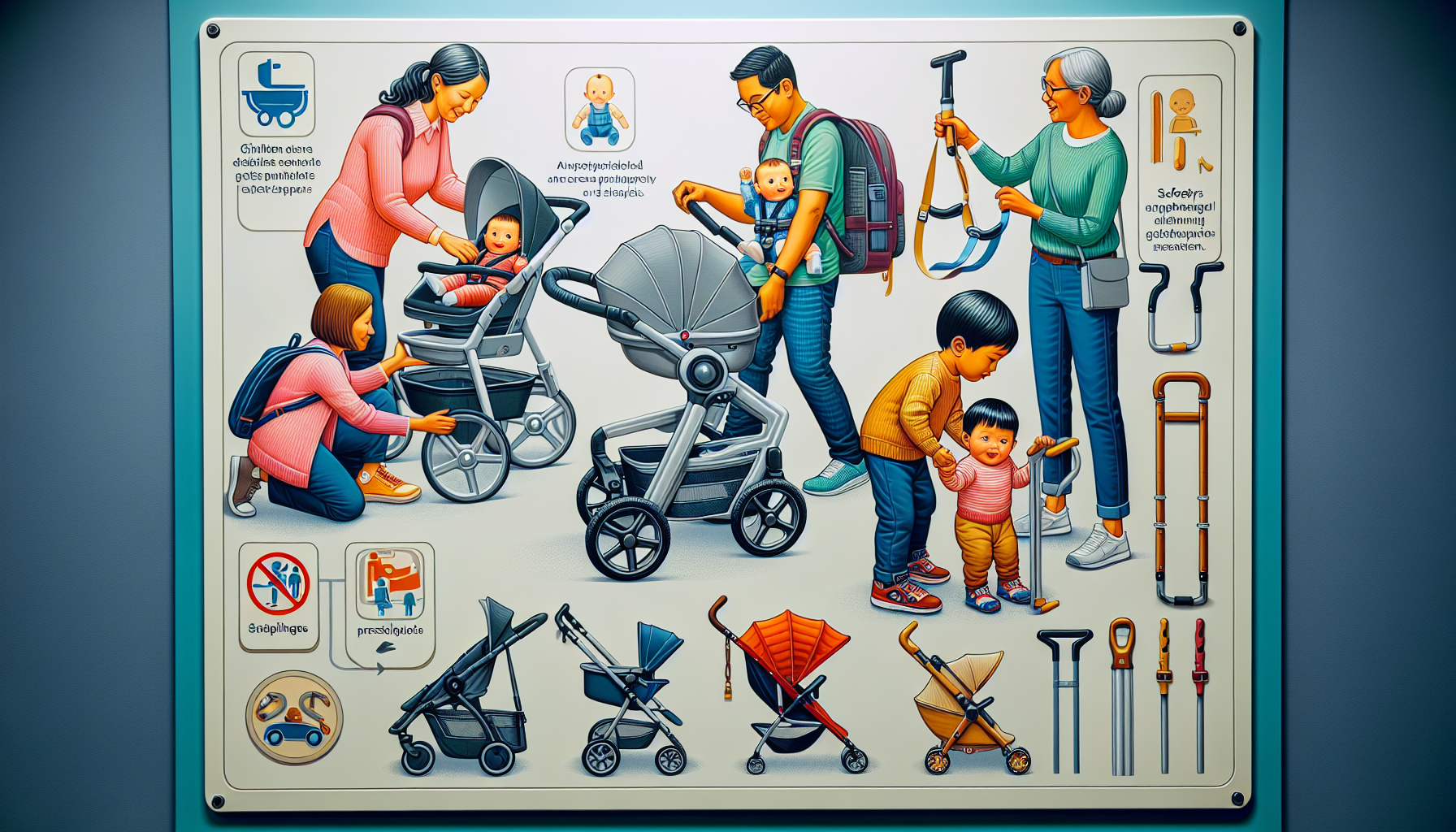When it comes to the safety of your little one, finding the right time to transition from a stroller can be a concern. You want to make sure that your child is ready to walk independently, but also ensure their safety during outings. In this article, we will explore the appropriate age for stroller safety and some helpful tips to consider when making the switch. Whether you’re a parent or caregiver, this information will assist you in determining when it’s time for your child to stroll on their own two feet.

Factors to Consider
When it comes to choosing a stroller for your child, there are several factors that you should take into consideration. These factors include your child’s physical development, the safety features of the stroller, and the local regulations and guidelines regarding the use of strollers. By carefully considering these factors, you can ensure that you select the right stroller for your child’s age and developmental stage.
Child’s Physical Development
Before choosing a stroller, it is important to consider your child’s physical development. Different strollers are designed to accommodate different ages and stages of development. For example, newborns require strollers that provide proper support for their fragile bodies, while toddlers may need strollers that allow for more freedom of movement. By considering your child’s physical development, you can choose a stroller that will provide optimal comfort and safety for your little one.
Safety Features of the Stroller
The safety features of a stroller are of utmost importance to protect your child while on the go. Look for strollers that come equipped with features such as a five-point harness, sturdy brakes, and a sunshade to shield your child from harmful UV rays. Additionally, ensure that the stroller has a stable and durable frame to prevent any accidents or mishaps. Always make sure to read the manufacturer’s instructions and follow the safety guidelines provided to ensure the utmost safety for your child.
Local Regulations and Guidelines
It is essential to familiarize yourself with the local regulations and guidelines regarding the use of strollers in your area. Some cities or parks may have specific rules regarding stroller usage or restrictions on certain types of strollers. By understanding and following these regulations and guidelines, you can ensure that you are using the stroller in a safe and responsible manner. It is always a good idea to check with local authorities or visit their websites to stay up to date with any specific rules or regulations in your area.
1. Newborn Stage
1.1. Importance of Carrying a Newborn
In the newborn stage, carrying your baby in a stroller may not be the most suitable option. Newborns require constant supervision and physical closeness to their parents. Carrying your newborn in a baby carrier or sling allows for better bonding and close contact, promoting emotional development and providing warmth and security. Carrying your baby also allows you to easily monitor their breathing and well-being.
1.2. Types of Strollers Suitable for Newborns
While carrying your newborn is recommended during the early stages, there are stroller options available that are suitable for newborns. Look for strollers that recline fully and provide sufficient head and neck support for your newborn. These strollers often come with attachments like a bassinet or a car seat adapter. The bassinet attachment provides a safe and comfortable sleeping space for your newborn, and the car seat adapter allows you to attach your infant car seat directly to the stroller frame.
1.3. Safety Precautions for Using Strollers with Newborns
When using a stroller with a newborn, it is crucial to take extra safety precautions. Ensure that your baby is securely strapped into the stroller using the provided harness. Always use the stroller’s brakes when stationary to prevent any accidental rolling. Avoid rough terrain or bumpy paths, as the jarring movements can be harmful to your baby’s delicate head and neck. Additionally, protect your newborn from excessive sun exposure by using a stroller with a sunshade or by covering the stroller with a light blanket or sunshade attachment.
2. Infancy Stage
2.1. When Can Infants Sit Up?
During the infancy stage, your baby will gradually gain more control over their body and develop the ability to sit up independently. This milestone typically occurs around 6 to 8 months of age. However, it is important to remember that each baby develops at their own pace, so it is essential to observe and assess your baby’s individual development before transitioning to a sitting position in a stroller.
2.2. Strollers for Infants
Once your infant is able to sit up independently, you can consider transitioning to a stroller that supports a seated position. Look for strollers with adjustable seat positions that allow your baby to recline when needed. Ensure that the stroller has proper back and neck support to keep your infant safe and comfortable. Lightweight and maneuverable strollers are also ideal for infants, as they make it easier to move around in various settings.
2.3. Key Safety Considerations for Infants in Strollers
When using a stroller with your infant, there are several safety considerations to keep in mind. Always secure your baby with the stroller’s harness to prevent them from slipping or falling out. Avoid placing heavy objects on the stroller’s handles, as this can cause the stroller to tip over. Be cautious of uneven surfaces and sharp turns, as sudden movements can potentially harm your baby’s developing neck muscles. Regularly inspect the stroller for any signs of wear or damage and promptly address any issues to ensure your infant’s safety.
3. Toddler Stage
3.1. Transitioning to a Toddler Stroller
As your child enters the toddler stage, they will require a stroller that offers more space and freedom of movement. Transitioning to a toddler stroller allows your child to sit upright comfortably and explore their surroundings while still providing the convenience of a stroller. It is generally recommended to make the transition once your child can sit and walk independently, usually around 12 to 18 months of age.
3.2. Features to Look for in Toddler Strollers
When choosing a stroller for your toddler, there are some key features to consider. Look for strollers with adjustable footrests and leg supports to accommodate your growing child. A sturdy and durable frame is essential to withstand the rigors of toddlerhood, and a spacious seating area provides room for your child to move around comfortably. Additionally, consider strollers with built-in storage compartments for storing snacks, toys, and other essentials.
3.3. Safety Tips for Toddlers in Strollers
While using a stroller with a toddler, it is important to prioritize their safety. Teach your child to always stay seated and keep their hands and feet inside the stroller to avoid potential accidents. Engage your toddler in conversation and keep them entertained to prevent boredom and restlessness. Be mindful of your surroundings, especially in crowded areas or near traffic, and always use the stroller’s brakes when necessary. Regularly inspect the stroller for any loose or broken parts and ensure that the harness is properly fastened to keep your toddler secure.
4. Preschooler Stage
4.1. Is a Stroller Necessary for Preschoolers?
During the preschooler stage, children typically demonstrate increased autonomy and a desire to explore the world around them. While a stroller may still be useful for longer outings or when your child is tired, it is important to consider whether a stroller is necessary for your preschooler. Some children may prefer to walk or use alternative modes of transportation, promoting independence and physical activity.
4.2. Alternatives to Strollers for Preschoolers
If you feel that a stroller is no longer necessary for your preschooler, there are several alternative options to consider. A child’s backpack with a built-in harness can provide a sense of security while allowing your child to walk independently. Scooters or balance bikes can also be great alternatives, providing a fun and active way for your preschooler to get around. Assess your child’s physical abilities and preferences to determine the most suitable alternative to a stroller.
4.3. When to Consider Still Using a Stroller for Your Preschooler
While many preschoolers may no longer require a stroller on a regular basis, there are situations where using a stroller can still be beneficial. For instance, if you are planning a long day out with your child, a stroller can provide a comfortable and convenient mode of transportation when your preschooler gets tired. Additionally, if you are traveling or exploring unfamiliar areas, a stroller can serve as a familiar and secure space for your child. Consider your child’s individual needs and the specific circumstances before deciding whether to continue using a stroller.
5. School-age Children
5.1. Benefits of Walking Instead of Using a Stroller
As children enter the school-age stage, walking becomes a preferred mode of transportation for shorter distances. Walking offers numerous benefits for their physical health, as it promotes exercise and contributes to the development of gross motor skills. It allows children to observe their surroundings, engage with their environment, and develop spatial awareness. Walking also fosters independence and self-confidence, as children learn to navigate their surroundings and make decisions on their own.
5.2. Instances When a Stroller may Still be Useful
While walking is generally encouraged for school-age children, there may be instances when a stroller can still be useful. If your child has a medical condition or physical limitations that make walking difficult or uncomfortable, a stroller can provide the necessary support and assistance. Likewise, if you are planning a particularly lengthy outing or visiting a crowded area, a stroller can serve as a backup option for when your child needs a break from walking. Always assess your child’s abilities and needs to determine when a stroller may still be a practical choice.
5.3. Safety Measures for School-age Children Using Strollers
When using a stroller with school-age children, certain safety measures should be followed. Ensure that your child is able to fit comfortably and securely in the stroller, with the harness properly fastened. Teach your child to be aware of their surroundings and to hold onto the stroller’s handles or strap while moving. Avoid steep inclines or rough terrain that could compromise the stroller’s stability. Regularly inspect the stroller for any signs of wear and tear, and address any safety concerns promptly.
6. Special Needs Children
6.1. Special Considerations for Strollers for Children with Special Needs
For children with special needs, strollers play an essential role in providing comfort, mobility, and support. When choosing a stroller for a child with special needs, it is important to consider the specific requirements of the child. Look for strollers that offer specialized seating options, such as adjustable backrests and harnesses, to accommodate the unique needs of the child. Additionally, strollers with adaptive features, such as tray tables or headrests, can provide additional comfort and convenience.
6.2. Adaptations and Modifications for Special Needs Strollers
In some cases, special needs strollers may require adaptations or modifications to meet the individual needs of the child. These adaptations may include additional accessories such as postural support cushions, lateral trunk supports, or specialized footrests. It is crucial to consult with healthcare professionals or occupational therapists who specialize in working with children with special needs to ensure that the stroller is properly customized for your child.
6.3. Safety Guidelines for Using Strollers with Special Needs Children
The safety of children with special needs should always be a top priority when using a stroller. Ensure that the stroller provides the necessary support and stability for the child’s specific needs. Check that the harness is secure and that any additional positioning devices or accessories are properly fitted and used according to the manufacturer’s instructions. Regularly inspect the stroller for any wear or damage and address any safety concerns promptly. It may also be beneficial to receive training or guidance from healthcare professionals on safe stroller use for your specific situation.
7. Final Thoughts
7.1. Importance of Assessing Individual Child’s Abilities
Throughout the various stages of childhood, it is crucial to continually assess and consider your child’s individual abilities and needs when determining the most suitable use of a stroller. Every child develops at their own pace and may have unique physical, cognitive, or emotional needs that should be taken into account. By understanding and responding to their individuality, you can ensure that your child’s stroller use promotes their safety, independence, and overall well-being.
7.2. Seeking Professional Advice
If you have any doubts or concerns about choosing or using a stroller for your child, do not hesitate to seek professional advice. Consult with healthcare professionals, such as pediatricians, occupational therapists, or child development specialists, who can provide valuable guidance based on your child’s specific needs and developmental stage. Their expertise can help you make informed decisions regarding stroller selection, safety considerations, and alternatives based on your child’s unique circumstances.
7.3. Balancing Safety and Independence
When it comes to using a stroller for your child, it is important to strike a balance between safety and promoting independence. As your child grows and develops, their need for independence and exploration naturally increases. While strollers provide a convenient mode of transportation, it is equally important to encourage physical activity and allow your child the freedom to walk and explore their environment whenever possible. By finding the right balance, you can ensure that your child’s stroller use supports their growth, development, and overall well-being.

